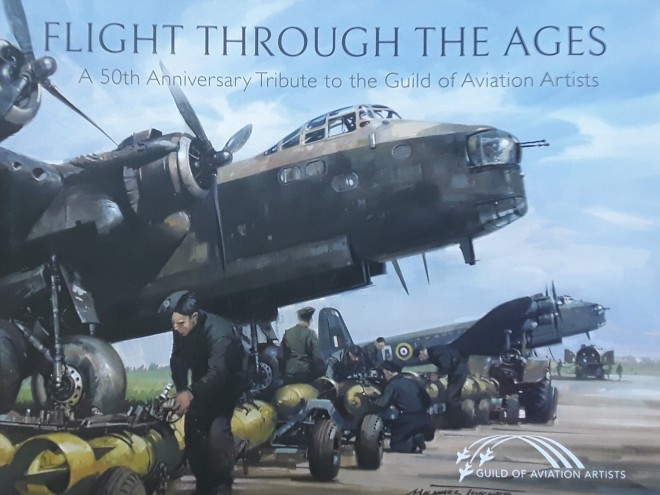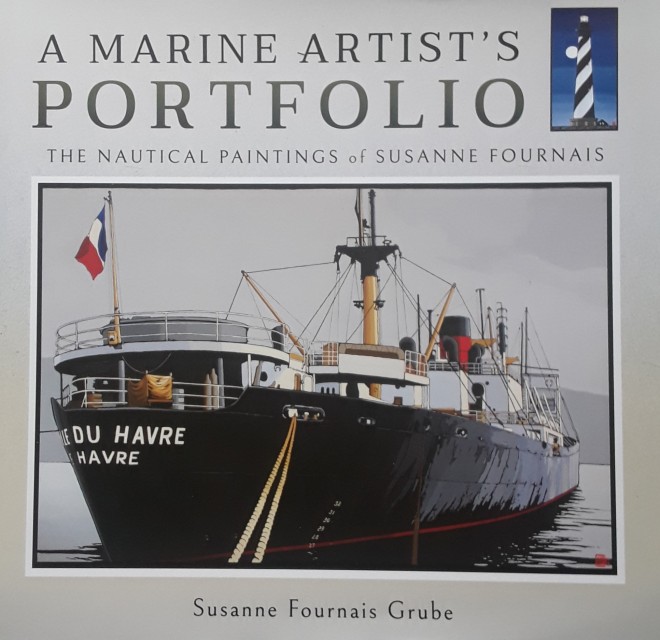
Reviewer: Michael Keith
Title: Flight Through The Ages: A 50th Anniversary Tribute to the Guild of Aviation Artists
Author: Guild of Aviation Artists
Total Number of Printed Pages: 218
Rating Scale (1: Very Poor, 10: Excellent): Photographs: 9, Text: 2
________________
A note appearing on this volume’s dustjacket states ‘This book celebrates 50 years of exhibitions [by the Guild of Aviation Artists] and includes paintings by…Guild artists, past and present, depicting aircraft from the earliest airborne activities through to the present day’. It is an accurate summary.
Within the volume itself, a section titled Introduction and Acknowledgements follows its’ Contents page. The title is self-explanatory. The section is in turn followed by a Foreword (by Michael Turner, President of the Guild of Aviation Artists), within-which a precis of the organisation’s history is presented. A five-page section titled The Guild of Aviation Artists follows. Within-this, sub-sections elaborate on the Guild’s aims its exhibitions, origins, history and current state. The Images section now follows. This comprises 195 pages and is divided into 13 Sections, these being analogous to Chapters. With the exception of Section 12 (Portraits) and 13 (Producing an Aviation Painting), each Section covers a specific era in aviation, from Early Aviation, Balloons, Airships (Section One) to Second World War (Section Four), Civil Aviation (Section Eight) and Museums (Section 11). With the exception of page 198 (Guild Sketching Days – Guild Artists at Work) which contains five small images), Sections 1-12 follow a similar format; namely a single (usually full-page) coloured image of a specific aircraft or aviation-themed event relating to the era being presented. Each image is accompanied by a caption which gives the work’s title, the aircraft or event which it depicts, the artist, and the medium used in its creation. Section 13 (Producing An Aviation Painting) does however follow a different format. It is the volume’s final section and as will ascertained from its title, takes the reader through the processes required to turn an original monochrome image into a full-coloured painting, taking eight pages to do so. The process is informative and uses both monochrome and coloured images to chart the development of a painting to meet a specific end result.
While this volume is full of beautiful and highly-coloured images, for this reviewer it was badly let down by the lack of an Index. According to its’ dustjacket, the book contains ‘…Some 200 illustrations…’ a fact which pre-supposes works by many different artists. In the absence of an Index, a reader seeking a specific artist has no choice but to laboriously peruse every page’s captions in the (perhaps forlorn) hope that they might somehow find the name of the individual they are seeking.
The same criticism can be levelled concerning the aircraft types and locations portrayed and for the same reasons; again, how can a specific aircraft type or location be found without having to view the whole volume. A significant failing! In addition, the paucity of caption information was such that this reviewer eventually started randomly counting the words of each caption to see how many words they contained; the shortest found was three, the longest, nine. Brevity has its place, but for this reviewer, this volume was not one of those places. It was also regrettable that an interpretive Glossary was not included within the wok; what (for example) do the letters GAvA, FGAvA, AGM or IWM mean? To a non-aviation, (possibly non-artistic) reader, they are meaningless. In addition, the absence of any biographical details about the contributing artists effectively dehumanises them, reducing them to mere names on a page, rather than providing possibly-inspirational details concerning their artistic-development and backgrounds.
Ultimately, this volume is a collection of pretty pictures of aeroplanes doing all sorts of interesting things. On that basis, buyers wanting beautiful pictures of all sorts of (mainly British) aeroplanes are likely to be well-pleased with this volume. However, readers seeking ‘technical’ details about said machines, or even how the individual images were created (Section 13 notwithstanding), will be disappointed by their lack, the book’s emphasis / focus being on the completed image rather than the ‘things technical / mechanical’ that got it to that stage.
That this volume contains spectacular artworks of beautiful aeroplanes and lighter than air machines is undeniable, but for this reviewer it lacks what he considers to be the most basic of items, the Index being but one of these. It is on this basis that he has given it the rating appearing below:
On a Rating Scale where 1: Very Poor, 10: Excellent, I have given the Photographs: 9, the Text: 2.
It should have been higher.
__________________________________


